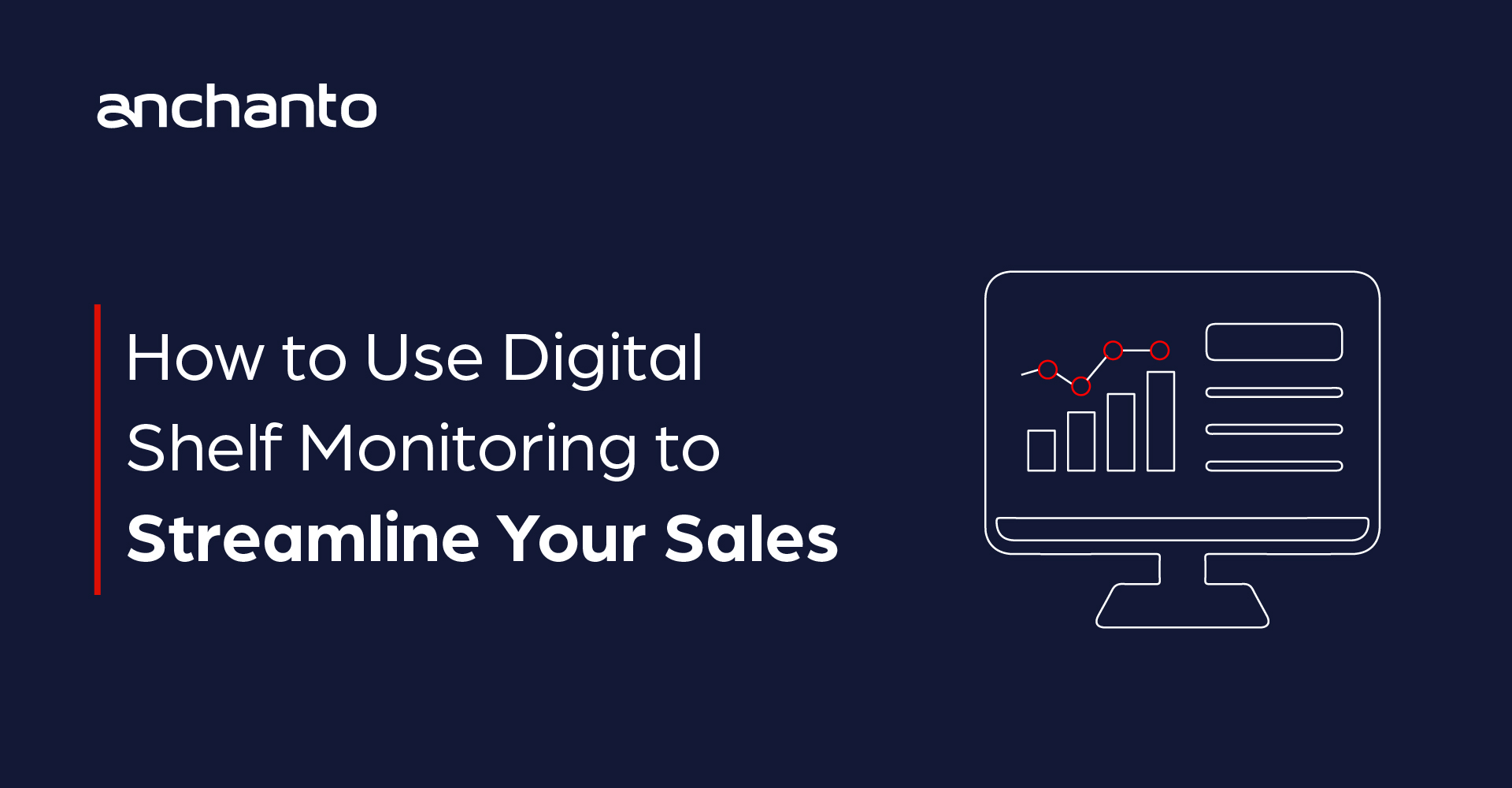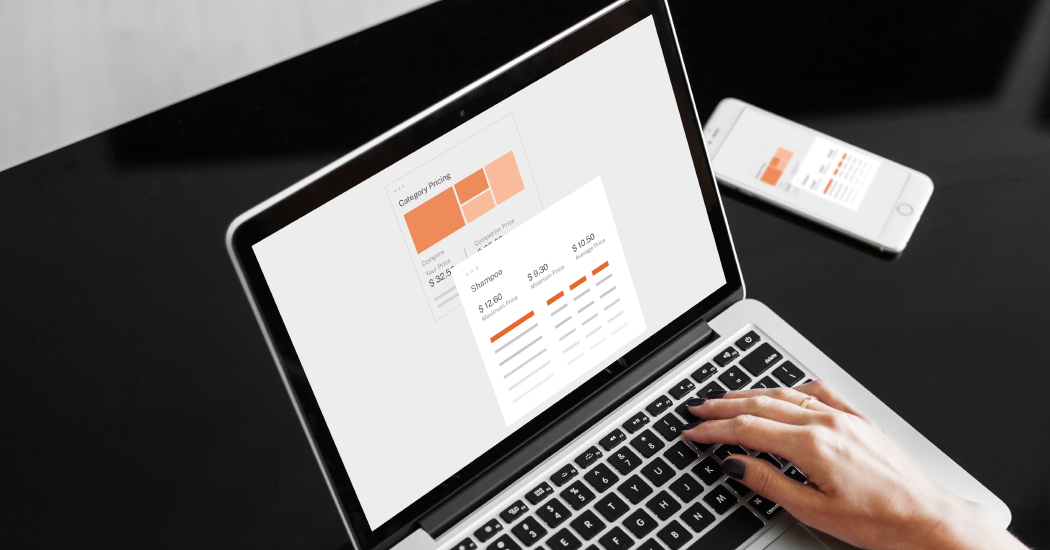
The Art of Streamlining Sales with the Power of Digital Shelf Monitoring
In 2023, global online retail sales reached an estimated US$ 5.8 trillion. According to Statista, by 2027 this number is expected to surpass eight trillion dollars [1].
In order to capitalize on this growth and prevent loss of market share to new entrants and existing competition, it’s time to enhance your strategy. To maximize sales and create a seamless user experience, many businesses are turning to the power of digital shelf monitoring. With this innovative tool, you can track and optimize your products’ presence and performance on various online retail platforms, ensuring they stand out from the crowd.
With the power of digital shelf monitoring, your brand can also streamline sales processes, gain a competitive edge in the e-commerce landscape, and optimize its online presence and drive success in the digital market space.
As you continue to read through our guide, we will unravel more details on:
- The Importance of Optimizing Your Digital Shelf
- Understanding the Role of Data in Digital Shelf Monitoring
- Key Metrics to Track in Digital Shelf Monitoring
- Tools and Software for Effective Digital Shelf Monitoring
- Best Practices for Streamlining Sales through Digital Shelf Monitoring
- Case Studies of Successful Digital Shelf Monitoring Strategies
- Future Trends in Digital Shelf Monitoring
The Importance of Optimizing Your Digital Shelf
If you are not familiar with the concept of a digital shelf, it refers to the virtual representation of your products. A well-optimized digital shelf plays a crucial role in attracting and converting potential customers. It can improve your brand’s visibility and also enhance the buyer experience, leading to higher conversion rates.
Optimizing your digital shelf can be done through various aspects like enhancing product descriptions, images, pricing, promotions, and overall presentation. With content that’s accurate, descriptive, and attractive, you can compel buyers to make purchases. Simultaneously, with a strategic analysis of your pricing and promotions, you can set up prices that appeal to your target audience. Additionally, an optimized digital shelf helps build trust and credibility, as customers are more likely to engage with a brand that presents its products in a professional, informative, and attractive manner.
To effectively optimize your digital shelf, it is crucial to leverage the power of digital shelf monitoring. This technology enables you to track and analyze price trends, sales performance, inventory availability, share of search, keyword trends, content quality, customer sentiment, and store, brand, and category performance. This provides you with valuable insights into how your products are performing and how they compare to your competition. You also receive insight into areas that need improvement and the type of action required to enhance your digital shelf.
Understanding the Role of Data in Digital Shelf Monitoring
Data lies at the heart of digital shelf monitoring. Through the collection and analysis of data, your business can gain valuable insights into its products’ performance, customer behaviors, and market trends. This data-driven approach enables you to make informed decisions and implement effective strategies to optimize your digital shelves and drive sales.
To expand on that, here are three vital roles of data in digital shelf monitoring:
- One of the key roles of data in digital shelf monitoring is to provide visibility into product availability. By tracking stock levels across different online platforms, businesses can ensure that their products are always in stock and ready for purchase. This real-time visibility prevents missed sales opportunities and helps maintain customer satisfaction.
- Another crucial aspect of data in digital shelf monitoring is pricing optimization. By monitoring competitors’ prices and analyzing market trends, businesses can adjust their pricing strategies to remain competitive. This data-driven approach allows companies to find the right balance between profitability and customer value, maximizing sales and revenue.
- Customer reviews also play a vital role in digital shelf monitoring. By analyzing customer feedback and sentiments, businesses can identify areas for improvement and take proactive measures to address any issues. Positive customer reviews not only enhance brand reputation but also act as social proof, influencing potential customers’ purchasing decisions.
Key Metrics to Track in Digital Shelf Monitoring
When it comes to digital shelf monitoring, several key metrics are crucial to track. These metrics provide insights into various aspects of your products’ performance, helping you identify areas for improvement and make data-driven decisions. Here are the key metrics to consider:
1. Pricing Trends
Pricing is another important metric to track with digital shelf monitoring. By monitoring competitors’ prices and market trends, you can adjust your pricing strategies to remain competitive. You also gain access to insights such as underpriced and overpriced products or price history of competitors, which directly impact your brand’s business. Optimized pricing helps maximize sales and revenue while ensuring profitability and consistency across sales channels.
2. Sales Performance
Through sales performance monitoring, you receive insights about growth opportunities for your brand. Particularly, if you sell through a distribution network and must deal with several resellers and third parties. With the right technology, you can gain detailed metrics on units sold, Gross Merchandise Value (GMV), and revenue earned by you and your competitor. Additionally, you can also identify the best and worst performing store, brand, and category at any given time.
3. Market Share
With a clear picture of your market share growth based on product and category in comparison to your competitors’, you will know where you stand. Market share is a measure of your brand’s competitiveness and success within its industry. Market share also provides insights into your brand’s market position and helps identify your strengths and weaknesses. By tracking market share changes, you determine the effectiveness of your strategies and identify opportunities for growth or potential threats.
4. Customer Sentiment
Customer reviews provide valuable insights into your products’ quality, customer satisfaction, and overall brand reputation. By analyzing customer reviews you can know their sentiments towards your products and your competitors’. With sentiment scores derived after an analysis, you can uncover the strengths and weaknesses of your brand and determine which areas need improvement and take proactive measures to address any issues.
5. Product Positioning
Product positioning refers to how your products are positioned alongside competitors on online retail platforms. By monitoring product positioning, you can identify opportunities to differentiate your products and stand out from the competition. Effective product positioning enhances visibility and increases the likelihood of attracting potential customers. Usually keyword ranking, product matching, and content quality analysis to monitor your brand’s position and improve it.
6. Product Availability
Product availability is a critical metric in digital shelf monitoring. It helps you check the quantity of stock you have available for purchase across different online platforms. By tracking product availability, you can restock promptly and prevent missed sales opportunities and maintain customer satisfaction.
7. Grey Seller Insights
Monitoring grey market sellers gives you an understanding of what they are doing and how their actions affect your brand. Insights on unauthorized sellers can include selling prices, promotions, product descriptions, market share, inventory quantities, customer insights, and more. With this information, you can determine if grey sellers are harming your brand and to what extent. Accordingly, you can report them to the marketplace they are selling on or peruse legal action.
Software Capabilities for Effective Digital Shelf Monitoring
To effectively monitor your digital shelf and leverage the power of data, various tools are available in the form of software. However, most of these cover only one or a few of the capabilities mentioned below as compared to Anchanto Digital Shelf, which encompasses them all. With advanced analytics and insights your business can optimize its online presence and drive sales. Here are some of the top capabilities for effective digital shelf monitoring:
1. Sales Performance Analytics
E-commerce sales analytics platforms provide comprehensive data on top-performing and low-performing products by units sold and GMV across all online sales channels and sellers. You also get a chance to ace peak sales season through regular and accurate data updates.
2. Price Monitoring
Price monitoring software enables businesses like yours to monitor competitors’ prices in real time. This software automatically tracks pricing data across different online platforms and provides insights to help optimize pricing strategies and boost your competitive edge.
3. Sentiment Analytics
Review monitoring tools, help you track and analyze customer reviews for your products across various online platforms. The analysis then provides valuable insights into customer sentiments, helping your brand address any product, services, or description related issues and improve overall customer satisfaction.
4. Competitor Analytics
Competitor analysis tools allow businesses to monitor how their products are positioned alongside competitors. The analytics provided will be in regard to how products are displayed, priced, and described. You can also see their market share, product availability, and customer sentiment score so you can accordingly optimize their product positioning and stand out from the competition.
5. Third Party Seller Monitoring
Third-party seller monitoring technology can help you view all the third party sellers of your brand and minutely track their online activity. This helps you keep a close watch on price violations and price range by seller type. Based on their negative actions, you can take appropriate action. You can also use this software to get a clear comparison of resellers, grey sellers, and official brands across diverse pricing parameters.
Currently, brands use different tools and software to acquire some of these capabilities. But, a system that can deliver all five simplifies your digital shelf management and enhances your productivity.
Get Effective Digital Shelf Monitoring with Anchanto
Future Trends in Digital Shelf Monitoring
As technology continues to evolve, the future of digital shelf monitoring holds several exciting trends:
1. Usage of Artificial Intelligence (AI) and Machine Learning (ML)
AI and ML technologies are likely to play a significant role in many digital shelf monitoring systema. At Anchanto, we currently use these technologies to automate data collection, analysis, and aid decision-making, enabling businesses to gain real-time insights and respond quickly to market changes.
2. Enhanced Data Visualization
Data visualization tools will continue to evolve, providing businesses with more intuitive and interactive ways to analyze and interpret data. These tools will enable businesses to gain deeper insights and make more informed decisions.
Conclusion: The Impact of Digital Shelf Monitoring on Sales Success
Digital shelf monitoring has emerged as a powerful tool for businesses to streamline sales and gain a competitive edge. By leveraging the power of data and analytics, businesses can optimize their online presence, improve customer satisfaction, and drive sales.
Optimizing your digital shelf involves monitoring key metrics such as product availability, pricing, customer reviews, and product positioning. By tracking these metrics you can identify areas for improvement and implement effective strategies to enhance your digital shelves.
Start with Digital Shelf Monitoring Today!
References –
[1] – statista.com – Retail e-commerce sales worldwide from 2014 to 2027


